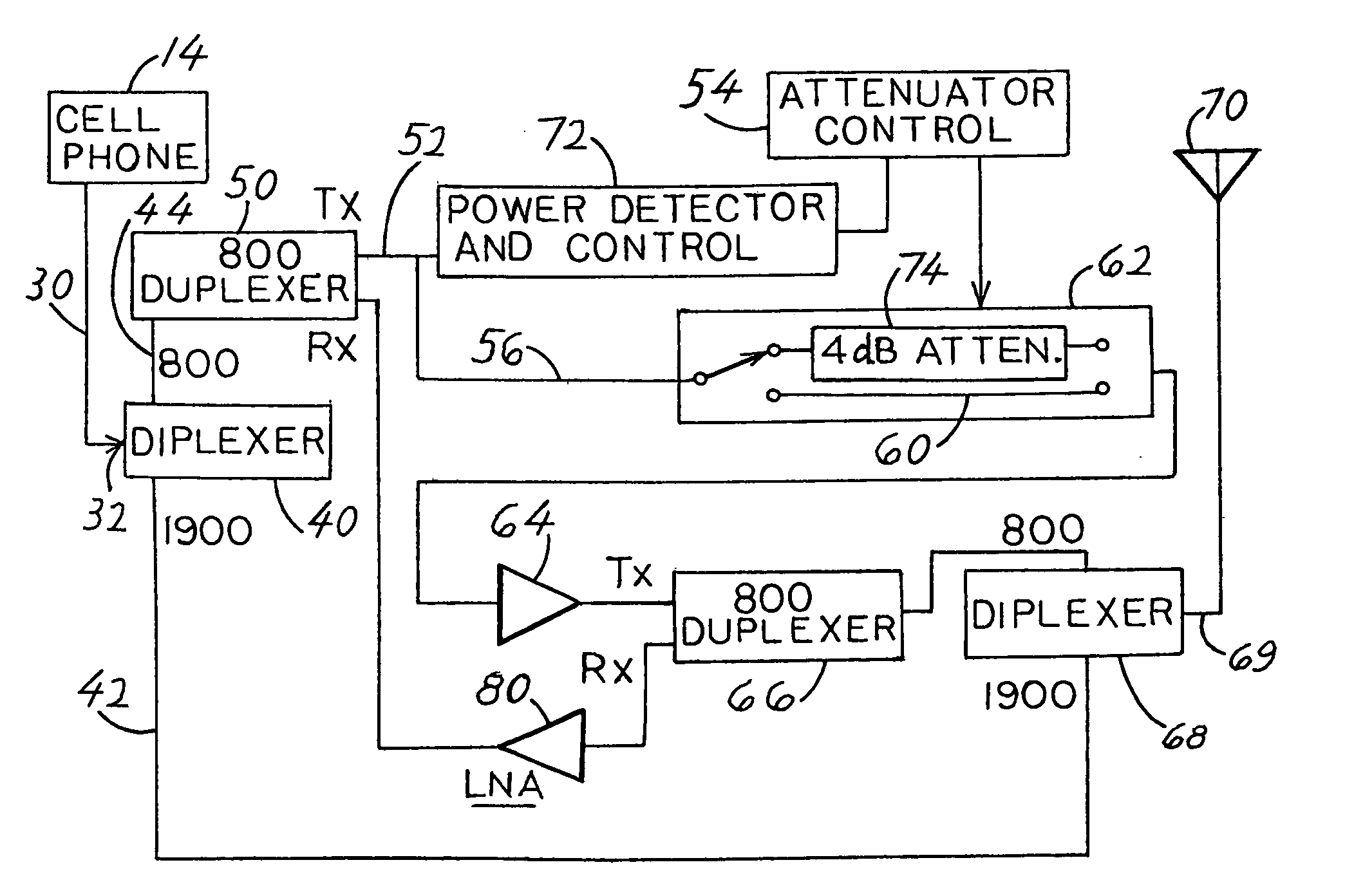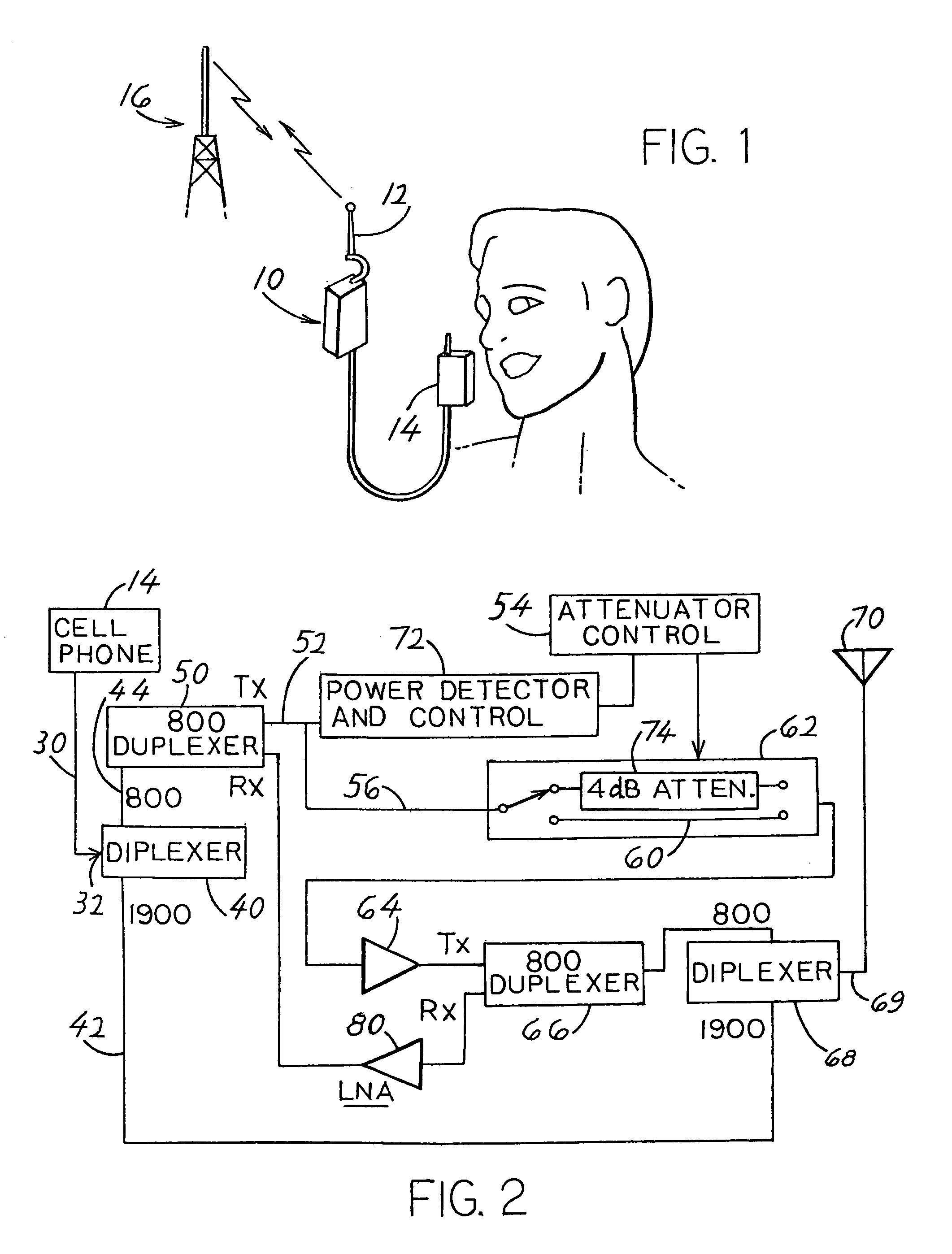Enhanced gain selected cell phone booster system
a cell phone booster and enhanced gain technology, applied in the field of enhanced gain selected cell phone booster systems, can solve the problems of adjacent channel interference, severe disruption of proper cell site operation, non-linear response, etc., and achieve the effect of avoiding distortion
- Summary
- Abstract
- Description
- Claims
- Application Information
AI Technical Summary
Benefits of technology
Problems solved by technology
Method used
Image
Examples
Embodiment Construction
[0013]FIG. 1 shows a booster 10 of the present invention, which is connected by coaxial cables to an antenna 12 and to an external antenna connection of a cell phone 14. One particular environment is where the cell phone lies in a vehicle and the antenna lies on the outside of the vehicle or against a glass pane, but the booster can be used in any other circumstance including a fixed installation to boost the capability of the cell phone. When the cell phone initiates a call, it transmits signals of increasing power until the signals are detected by a cell site 16. The cell site then transmits signals (digitally encoded signals) to the cell phone that control the power output of the cell phone. Thus, if the nearest cell site is distant, the cell site will control the cell phone to transmit strong signals, but no more than +30 dBm (30 dB above one milliwatt). If the cell site is close it will control the cell phone to transmit weak signals. For the case of a very close cell site, the...
PUM
 Login to View More
Login to View More Abstract
Description
Claims
Application Information
 Login to View More
Login to View More - R&D
- Intellectual Property
- Life Sciences
- Materials
- Tech Scout
- Unparalleled Data Quality
- Higher Quality Content
- 60% Fewer Hallucinations
Browse by: Latest US Patents, China's latest patents, Technical Efficacy Thesaurus, Application Domain, Technology Topic, Popular Technical Reports.
© 2025 PatSnap. All rights reserved.Legal|Privacy policy|Modern Slavery Act Transparency Statement|Sitemap|About US| Contact US: help@patsnap.com



